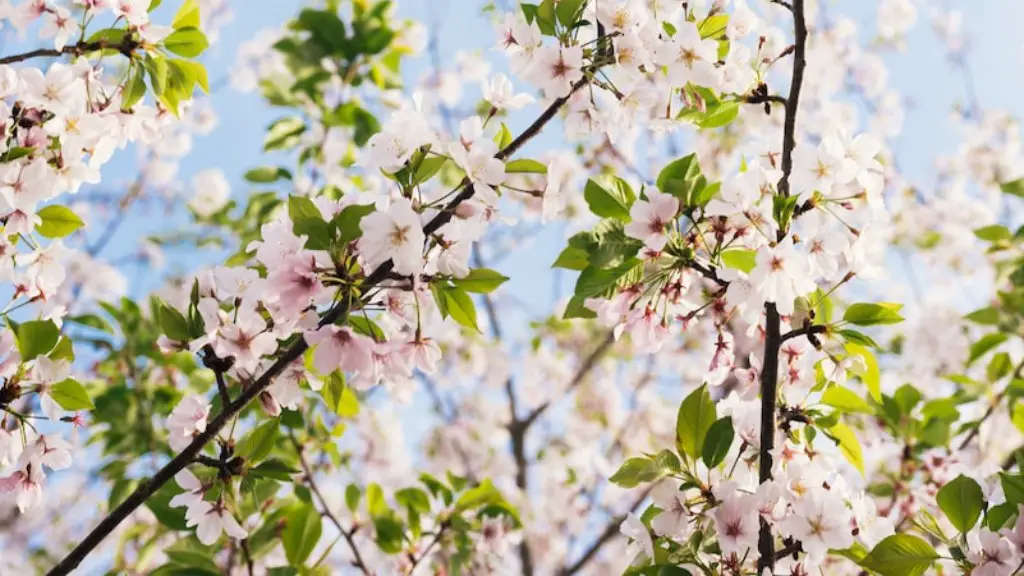What Is a Yoshino Cherry Tree?
Yoshino cherry trees, or Prunus x yedoensis, are a species of flowering cherry trees which is native to Japan. These trees produce epic clusters of beautiful light-pink blossoms in early spring that provide incredible visual appeal. Yoshino cherry trees have since been widely cultivated around the world and are recognizable for their fairly tall and slender stature with long branches and broad, shiny, toothed leaves.
How Tall Do Yoshino Cherry Trees Grow?
Yoshino cherry trees are a relatively tall species of flowering cherry tree and can grow up to 25-30 feet in height. These trees can also reach 30-35 feet in width and generally have a lifespan of 30-50 years. This makes them an incredibly popular choice for gardens and public spaces that are looking to achieve a visual impact that will last for generations.
Importance of Pruning A Yoshino Cherry Tree
In order to keep Yoshino cherry trees in the correct shape and symmetry, it is essential to regularly prune the branches. Pruning helps to promote healthy growth and prevents branches from becoming overgrown. It is generally recommended to prune Yoshino cherry trees once or twice a year; in the spring, when the flowers have just finished blooming, and also in the summer when the branches have become too long.
Cropping and Controlling The Growth Of A Yoshino Cherry Tree
Yoshino cherry trees can also be cropped and pruned in order to control their growth and shape. Pruning and cropping helps keep the shape looking neat and balanced, and prevents it from becoming top heavy or out of proportion. It is suggested to prune the branches at different levels to the trunk, with the top branches getting the most light and the low-lying branches receiving the least light.
Yoshino Cherry Tree In Disease and Pest Control
Yoshino cherry trees are very resistant to disease and pests.However, it is important to regularly monitor the trees for any signs of infestation, such as mold and pests, and take action as soon as possible. Some common pests that can affect Yoshino cherry trees include aphids, scale insects, caterpillars and leaf miners.
Soil Requirements For A Yoshino Cherry Tree
Yoshino cherry trees like soil that is rich in nutrients and slightly acidic. It is important to note that these trees have a shallow root system, so the soil must be kept moist and well-drained to ensure healthy growth. To improve the soil, it is recommended to add a layer of compost or mulch to keep the root system cool and moist.
Benefits Of Planting A Yoshino Cherry Tree
The Yoshino cherry tree is a beautiful and majestic species of flowering cherry tree that is sure to bring beauty to any landscape. Aside from its aesthetic appeal, the Yoshino cherry tree can also provide a number of environmental benefits. These trees provide habitat for beneficial insects, birds and mammals, and their flowers help to attract pollinators such as bees, butterflies and hummingbirds.
Importance Of Proper Care For A Yoshino Cherry Tree
It is important to provide proper care for a Yoshino cherry tree in order for it to thrive and reach its full height potential of 25-30 feet. It is essential to provide the tree with the right soil, regular pruning and cropping, and protection from pests and disease in order to ensure healthy growth. With the right care, a Yoshino cherry tree can provide many years of beauty and enjoyment.
Growing Conditions Of A Yoshino Cherry Tree
Yoshino cherry trees prefer full sun, but can also tolerate partial shade. It is important to note that the tree needs adequate drainage and soil that is rich in organic matter in order to grow to its full height potential. Yoshino cherry trees are strong and resilient and can tolerate wind and rain, which makes them suitable for planting in most climates.
Soil Amendment For A Yoshino Cherry Tree
In order to maximize the growth of a Yoshino cherry tree, it is important to amend the soil. Soil amendments such as compost, aged manure, peat moss and other organic materials can greatly improve the soil quality and aid in the growth of the tree. It is generally recommended to add these amendments to the soil twice a year; in the early spring and again in the late fall.
Propagation Of A Yoshino Cherry Tree
Yoshino cherry trees can be propagated via seeds and cuttings. Seeds can be planted in the early spring or late fall, and cuttings can be taken in early summer. It is important to note that cuttings should be taken from healthy and disease-free trees. Once the cuttings have been taken, they should be planted in well-prepared soil and kept in a warm location until they have established strong root systems.
Fertilization Of A Yoshino Cherry Tree
In order to encourage healthy growth of a Yoshino cherry tree, it is recommended to use a slow-release fertilizer twice a year. It is important to ensure that the fertilizer is suitable for flowering trees and use the correct amount according to the instructions on the packaging. Fertilizing a Yoshino cherry tree during its growing season helps to provide essential nutrients and encourages the development of beautiful blooms.
Maintenance Of A Yoshino Cherry Tree
In order to ensure healthy growth of a Yoshino cherry tree, it is important to perform regular maintenance. This should include regular pruning and cropping, proper fertilization, and pest and disease control as needed. It is also important to water the tree regularly and to provide it with a layer of mulch to help retain moisture and keep the soil cool. With proper maintenance, a Yoshino cherry tree can bring beauty and enjoyment to any landscape for many years.



